Rollover equity agreements let sellers convert part of their ownership into equity in the acquiring company, rather than taking an all-cash payout. This approach aligns buyer and seller interests, defers taxes for sellers, and ensures management continuity for buyers. However, choosing the right template is key to avoiding disputes and ensuring smooth transactions.
Here’s a quick look at the top 5 templates:
- Standard Corporate Stock Exchange: Best for C-corp and S-corp deals with stock-for-stock exchanges. Offers tax deferral under Section 351 and immediate vesting.
- Partnership/LLC Unit Rollover: Tailored for partnerships and LLCs. Maintains pass-through tax benefits and includes flexible vesting schedules.
- Partial Equity Sale with Deferred Tax: Combines cash and equity rollover, balancing liquidity and growth potential. Works well for family businesses and private equity.
- Earnout-Linked Rollover: Adds performance-based payouts to equity rollovers, ideal for bridging valuation gaps in uncertain deals.
- Employee/Management Incentive Rollover: Focuses on retaining key talent by converting equity awards into stakes in the new company.
Each template serves specific deal structures and tax goals. Choosing the right one ensures clarity, compliance, and alignment with transaction objectives.
Key Considerations for Handling Rollover Equity
Key Components of Rollover Equity Agreements
Getting a handle on the essential parts of a rollover equity agreement is crucial for a smooth transaction. These agreements outline how equity is converted, safeguard the interests of everyone involved, and ensure compliance with tax laws. Together, these elements define the structure and outcome of rollover deals.
Equity Conversion Mechanics lay out the process for swapping existing shares or partnership units for new equity in the acquiring or surviving entity. This exchange follows a pre-agreed formula based on fair market value at the time of closing. For instance, if a company is sold for $500 million and has $20 million in net debt, the equity value comes to $480 million. Rolling over 20% of the equity in this scenario would amount to $96 million in new equity. Clearly defining the conversion ratio and valuation methods upfront helps avoid disputes later.
Vesting Schedules specify when participants can fully access the value of their rollover equity. These schedules depend on the goals of the transaction. For senior management, immediate vesting - granting 100% ownership at closing - is common. Alternatively, vesting can occur over time, tying ownership to ongoing performance over several years. This approach encourages long-term commitment and operational stability after the deal is completed.
The tax implications of rollover equity are a major driver for these agreements. A well-structured rollover may qualify for tax deferral under IRS Section 351 (for corporations) or Section 721 (for partnerships), allowing participants to defer taxable gains at closing. However, any cash received during the transaction could trigger immediate tax liabilities. Additionally, the type of entity involved - whether a C-corporation, S-corporation, or LLC - can influence both the tax basis step-up and future tax obligations. Consulting with tax advisors early in the process is critical to maximize these benefits and ensure compliance with IRS rules.
Restrictions on Transferred Equity are often included to protect both parties. These may involve lock-up periods or provisions like drag-along and tag-along rights. Put and call options might also be included, enabling one party to compel the sale or purchase of the rollover equity under specific conditions or timelines. Adjustment clauses can account for post-closing changes, such as shifts in working capital or performance metrics, ensuring fairness if the company’s value evolves unexpectedly.
Rollover equity agreements are particularly common in buyouts and management-led acquisitions, where keeping stakeholders engaged is key. In leveraged buyouts, sellers typically roll over 10% to 40% of their equity to show their commitment and share in the company’s future growth.
1. Standard Corporate Stock Exchange Template
The Standard Corporate Stock Exchange Template is the go-to framework for most rollover equity transactions involving C-corporations and S-corporations. It simplifies the process of converting shares into new equity, ensuring a smooth transition during these deals.
Equity Conversion Mechanics
At its core, this template relies on a stock-for-stock exchange, where shareholders trade their current shares for new ones in the acquiring company instead of receiving an all-cash payout. The value of the rolled equity is determined at the time of closing, with participants receiving a proportional share of the new entity's equity based on the agreed valuation.
For instance, if a shareholder rolls over 25% of their equity, they receive a corresponding portion of the deal's value, calculated using a predefined conversion ratio. This ratio is a key part of the agreement and usually includes provisions for fractional shares, which are often settled with cash payments instead. A notable example is the December 2020 transaction involving Nesco Holdings, Inc., where partnership interests were exchanged for newly issued common stock, with specific rules for handling fractional shares.
After the equity conversion, clear vesting and lock-up provisions are critical to ensure management stability and alignment.
Vesting and Lock-Up Provisions
In many cases, standard corporate exchanges provide immediate vesting for senior management and key stakeholders upon closing. However, transfer restrictions are typically implemented to maintain continuity and align interests.
Executives are often required to hold their new shares for 12–24 months after the closing date, with accelerated vesting available under certain conditions. The agreements also include drag-along and tag-along rights - drag-along rights allow majority shareholders to force a sale, while tag-along rights enable minority shareholders to join in future transactions.
Additionally, rights of first refusal help protect existing shareholders by giving them the chance to purchase shares before they are sold to outside parties. These details are outlined in the shareholders' agreement, ensuring control over ownership changes.
Tax Treatment and Compliance Strategies
One of the biggest advantages of this template is its tax-deferred treatment under Section 351 of the Internal Revenue Code. This allows shareholders to defer capital gains taxes on the exchanged shares, except for any cash portion received during the transaction.
However, receiving cash (referred to as "boot") does trigger immediate tax liability. Strict adherence to legal and contractual requirements is essential to maintain this tax-deferred status. For example, in the Nesco Holdings transaction, the rollover hinged on completing a related purchase and sale agreement, with all legal conditions needing to be met before the rollover could proceed.
These tax benefits make this structure particularly appealing for deals that balance liquidity with deferred tax advantages.
Best Use Cases for Specific Deal Structures
This template is ideal for transactions involving C or S corporations, such as private equity deals and management buyouts, where a partial rollover - typically between 10% and 40% - helps maintain alignment among stakeholders.
Private equity transactions often use this structure when sellers want to retain a stake in the future growth of the combined entity. It’s also suitable for situations where not all shareholders opt to participate in the rollover. In such cases, careful planning is required to avoid tax issues or disputes over control. This flexibility makes the template effective for balancing immediate liquidity needs with long-term strategic goals.
2. Partnership/LLC Unit Rollover Template
The Partnership/LLC Unit Rollover Template is specifically designed for businesses structured as partnerships or LLCs. Unlike corporate stock templates, this approach offers flexibility suited to pass-through entities, which corporate structures often lack.
Equity Conversion Mechanics
In a Partnership/LLC unit rollover, existing partnership or LLC units are exchanged for new units in the acquiring or surviving entity. The process typically starts with the creation of a new LLC holding company. The buyer contributes cash for a majority stake, while existing owners roll over a portion of their units into the new entity. This method preserves the pass-through tax treatment and allows for customized governance. To simplify the process, fractional units are settled in cash, avoiding complications related to unit certificates. Once the conversion is in place, the focus shifts to establishing vesting schedules and transfer restrictions.
Vesting and Lock-Up Provisions
Vesting schedules play a key role in ensuring that important stakeholders remain committed after the transaction. These schedules, combined with a 180-day lock-up period, help align the interests of rollover participants with the company's long-term success.
Tax Treatment and Compliance Strategies
One of the standout benefits of this template is its tax-deferred treatment under Section 721 of the Internal Revenue Code. This provision allows participants to defer capital gains taxes on the exchange of their old units for new ones. However, any cash received during the transaction (referred to as "boot") is immediately taxable. To maximize tax deferral, the transaction must be carefully structured and comply fully with IRS regulations. Working with tax advisors is essential to avoid unintended tax consequences and to ensure accurate reporting.
Best Use Cases for Specific Deal Structures
This template is particularly useful in transactions where maintaining pass-through tax status is a priority, especially when investor participation levels vary. It works well in private equity acquisitions, family business transitions, and situations where ongoing management involvement is critical. The structure is ideal for entities already organized as partnerships or LLCs, as it avoids the need for complex entity conversions. Businesses such as professional service firms, real estate companies, and family-owned enterprises often benefit from the operational flexibility of an LLC structure. In leveraged buyouts, sellers typically roll over 10–40% of their equity. This approach provides enough incentive for key stakeholders to remain engaged while still allowing them to achieve significant liquidity from the transaction. These features make this template a practical choice for deals that emphasize pass-through treatment and operational flexibility.
3. Partial Equity Sale with Deferred Tax Treatment Template
This approach strikes a balance between immediate cash flow and long-term growth potential. It allows sellers to convert part of their equity into cash while retaining a stake in the business by rolling over the remaining equity into the acquiring entity. This setup aligns the seller's interests with the future performance of the business.
How Equity Conversion Works
In a partial equity sale, the seller receives cash for a portion of their equity and rolls over the rest into the acquiring entity, often in the form of shares or units in the new company. The process typically starts by determining an optimal ratio of cash to rollover equity - commonly a 60% cash and 40% rollover split - though this can vary based on the deal and the seller's goals.
The equity conversion can take several forms, including stock-for-stock exchanges, mergers, or contributions to a newly created holding company. It's crucial to document key details like the number of shares or units, valuation methods, rights, restrictions, and governance terms. Supporting materials such as board resolutions, updated capitalization tables, and legal opinions ensure everything complies with relevant regulations. These steps lay the groundwork for the tax and vesting considerations discussed below.
Tax Deferral and Compliance
One major benefit of this structure is the ability to defer capital gains taxes on the rolled-over equity. The transaction can qualify for tax deferral under Section 351 for corporations or Section 721 for partnerships and LLCs. While the seller must pay taxes on the cash portion immediately, the rolled-over equity enjoys deferred tax treatment.
For this deferral to apply, the rolled-over portion must be substituted with qualifying equity. Consulting a tax advisor early in the process is essential to ensure compliance with IRS rules and to avoid unintended tax liabilities.
Vesting and Lock-Up Terms
To maintain stability in the ownership structure, rolled-over equity is often subject to vesting and lock-up provisions, typically lasting 6 to 12 months. These provisions prevent the immediate resale of the rolled-over equity, which helps preserve continuity. However, they can also limit the seller's short-term liquidity. Finding the right balance between stability and liquidity is critical.
Ideal Scenarios for This Structure
This template is particularly effective in private equity acquisitions where sellers want both liquidity and a chance to stay involved in the company's growth. Unlike full rollovers or standard stock exchanges, this approach offers a customized mix of cash and retained interest.
It’s especially useful in family business transitions, where sellers may want to defer taxes while maintaining a role in the business. Similarly, management buyouts often rely on this structure, enabling key stakeholders to retain equity and remain invested in the company’s future. That said, this approach is less suitable for sellers seeking a full cash exit or in situations where buyers cannot provide the qualifying equity required for tax deferral.
sbb-itb-a3ef7c1
4. Earnout-Linked Rollover Template
This template combines the concept of traditional rollover equity with performance-based payouts, offering a mix of immediate equity issuance and future rewards tied to performance. The earnout component helps bridge valuation differences and keeps sellers engaged in the company’s success after the deal closes. It builds on standard rollover and partial sale structures but adds performance triggers to better align seller incentives.
Equity Conversion Mechanics
In this model, sellers exchange part of their existing equity for new shares or units in the acquiring company at the time of closing. What sets this apart is the inclusion of contingent payouts tied to earnout milestones.
For example, in a $10 million deal, a seller might receive $7 million in cash, roll over $1 million into new equity, and earn an additional $2 million if specific EBITDA targets are met over a two-year period. The conversion ratio can fluctuate based on whether the target company achieves the agreed-upon financial or operational goals, tying a portion of the seller’s payout directly to future performance.
Data from the industry shows that sellers who participate in rollovers typically receive between 8% and 40% of their deal consideration in equity, with an average of around 20%. A 2023 SRS Acquiom study found that 24% of private M&A deals included an earnout component, and nearly half of those also involved some form of equity rollover.
Vesting and Lock-Up Provisions
To ensure sellers stay engaged during the earnout period, this structure often includes vesting and lock-up terms. These provisions typically restrict the sale or transfer of rollover equity for a set period, often 180 days post-closing. Vesting schedules may also require sellers to remain actively involved or meet performance milestones before gaining full ownership rights.
For instance, a vesting schedule might grant an initial portion of rollover equity at closing, with the remainder vesting over time based on continued involvement and achieving specific performance goals. These measures help maintain business continuity and incentivize sellers - who have critical knowledge of the business - to stay motivated and drive results, even though they may limit short-term liquidity.
Tax Treatment and Compliance Strategies
While tax deferral benefits are similar to other rollover templates, the earnout component introduces added complexity. Many of these transactions aim to qualify for tax deferral under Section 351 or Section 368 of the Internal Revenue Code, allowing participants to defer recognizing gains on exchanged equity.
However, the earnout introduces unique tax challenges. The IRS may classify earnout payments as either ordinary income or capital gains, depending on how the deal is structured. Careful planning is essential to avoid unexpected tax liabilities. Working with experienced tax advisors and maintaining thorough documentation to support tax deferral claims are vital steps in these transactions.
Best Use Cases for Specific Deal Structures
Earnout-linked rollover templates are particularly effective in deals where there is a valuation gap between buyer and seller due to uncertain future performance. They work well in private equity acquisitions, management buyouts, and transactions involving businesses with high growth potential but unpredictable earnings. These structures are especially useful for founder-led businesses where the seller’s continued involvement is crucial to future success.
This approach is commonly applied in sectors like technology and healthcare, which often face both uncertainty and high growth potential. In the U.S., the average earnout period for private deals typically spans 2–3 years, with performance targets often based on metrics like EBITDA or revenue.
While these structures align the interests of buyers and sellers, they come with potential challenges, such as disputes over earnout calculations or integration issues that impact performance. To mitigate these risks, it’s important to use clear and objective earnout formulas, well-defined performance metrics, and detailed dispute resolution mechanisms.
Platforms such as Clearly Acquired provide tools and advisory services to simplify the negotiation and execution of earnout-linked rollover agreements, addressing both tax and operational complexities effectively.
5. Employee/Management Incentive Rollover Template
This template is designed to retain essential talent by converting equity awards into stakes in the acquiring company. Unlike traditional approaches that focus mainly on sellers, this structure specifically targets employees and management teams holding equity stakes, such as stock options and restricted stock. The primary aim is to ensure continuity and keep critical personnel motivated during a change of control.
Equity Conversion Mechanics
Employee and management rollover agreements typically involve converting existing equity compensation into equivalent instruments in the acquiring company. The conversion process uses a fixed formula based on the deal's valuation and the current equity held by employees and management.
Key executives often roll over 15–25% of their equity, with conversion ratios determined by the transaction's enterprise value and the fair market value of the employee's holdings at the time of closing. Stock option holders convert their options into new grants, adjusted for strike price and vesting terms. These terms create a foundation for retention strategies, which are further detailed below.
Vesting and Lock-Up Provisions
Retention-focused templates generally include cliff vesting (12–24 months), followed by monthly or quarterly vesting over a span of 2–4 years. These provisions are designed to retain key employees over the long term.
Lock-up provisions often restrict employees from selling their rollover equity for at least 12 months after the deal closes. For senior management, these restrictions may extend to 18 or 24 months. Such measures are crucial for maintaining stability during the integration phase.
Performance-based vesting is another common feature. A portion of the rollover equity vests only when specific goals - such as revenue targets, customer retention benchmarks, or successful integration milestones - are met. Additionally, many agreements include acceleration clauses, which allow for immediate vesting if an employee is terminated without cause or if another change of control occurs within a set timeframe.
Tax Treatment and Compliance Strategies
Once the conversion and vesting terms are set, addressing tax implications becomes a priority. Employee rollovers come with unique tax challenges, and the treatment varies based on the type of equity and the structure of the conversion.
For incentive stock options (ISOs), rollovers should be structured to retain favorable Section 422 treatment. This requires maintaining the original grant date and exercise price to avoid triggering immediate taxation. Non-qualified stock options, on the other hand, offer greater flexibility but may result in ordinary income recognition at the time of conversion.
For employees receiving restricted stock, Section 83(b) elections can be a powerful tool, allowing them to recognize income at the time of grant rather than upon vesting. This is particularly advantageous if the stock is expected to significantly increase in value during the vesting period.
To avoid penalties, ensure compliance with Section 409A for deferred compensation arrangements.
Best Use Cases for Specific Deal Structures
Employee incentive rollover templates are especially effective in industries where retaining skilled talent is critical. Sectors like technology, professional services, and healthcare often rely on these structures during ownership transitions to maintain their competitive edge.
Private equity acquisitions frequently use these templates to align management incentives with the firm's value creation goals. This approach provides employees with meaningful participation in the company's growth while ensuring continuity.
Management buyouts are another scenario where these templates shine. In such transactions, management teams typically roll over a significant portion of their existing equity while receiving additional grants tied to the success of the buyout.
These templates are also highly useful in succession planning. They allow business owners to gradually transfer ownership to key employees, ensuring a smooth transition while keeping the team motivated and engaged.
For companies using platforms like Clearly Acquired, specialized advisory services are available to help structure these agreements. These services focus on balancing retention goals with tax efficiency and regulatory compliance, making the employee rollover structure a vital tool for maintaining motivation and continuity across all levels of the business.
Template Comparison Chart
When structuring rollover equity agreements, selecting the right template is crucial. The chart below highlights five key templates, each tailored to specific transaction structures, tax objectives, and business goals. Each template serves distinct purposes and comes with its own set of benefits.
| Template Type | Best Use Case | Equity Conversion | Tax Treatment | Vesting Requirements | Key Requirements |
|---|---|---|---|---|---|
| Standard Corporate Stock Exchange | Traditional M&A transactions, public company acquisitions | Direct stock-for-stock exchange at fixed ratio | Section 368 tax deferral, potential capital gains treatment | Immediate vesting common, optional lock-up periods | Corporate structure, clear valuation methodology, regulatory compliance |
| Partnership/LLC Unit Rollover | Private equity deals, partnership acquisitions, LLC transactions | Unit conversion based on capital account values | Pass-through taxation | Vesting schedules (typically 2–4 years) | Partnership/LLC structure, updated operating agreements, K-1 distributions |
| Partial Equity Sale with Deferred Tax | Mixed cash-equity deals, partial liquidity events | Percentage-based conversion with cash component | Installment sale treatment under Section 453, deferred recognition | Variable based on rollover percentage | IRS compliance, proper documentation, escrow arrangements |
| Earnout-Linked Rollover | Performance-dependent acquisitions, uncertain valuations | Conversion tied to future performance metrics | Rules on contingent consideration and ordinary income | Performance-based vesting over 2–5 years | Measurable performance criteria, milestone definitions, dispute resolution |
| Employee/Management Incentive | Talent retention, management buyouts, succession planning | Equity compensation conversion with retention focus | Section 422 for ISOs, Section 83(b) elections available | As outlined previously | Employment agreements, retention objectives, compliance with Section 409A |
Key Insights on Template Selection
The Standard Corporate Stock Exchange Template is ideal for straightforward acquisitions where clarity and simplicity are priorities. It’s a go-to option for companies seeking clean and efficient corporate transactions, often used by platforms like Clearly Acquired.
For pass-through entities, Partnership/LLC Unit Rollover Templates are indispensable. These templates cater to private equity and LLC transactions, where maintaining favorable tax treatment through specialized documentation is essential.
Partial Equity Sale Templates strike a balance between immediate liquidity and future growth potential. This structure is particularly appealing to sellers who need cash for personal use but still want to benefit from the company’s future success.
When valuation disputes arise, Earnout-Linked Templates bridge the gap. By tying equity conversion to performance metrics, this approach aligns incentives and reduces risk for both buyers and sellers.
Finally, Employee and Management Incentive Templates prioritize retention over liquidity. These templates often include restrictive vesting schedules but provide substantial long-term wealth-building opportunities for key personnel.
Tax and Vesting Considerations
Tax treatment often dictates template selection. Corporate transactions typically lean toward immediate tax deferral, while partnership structures focus on preserving pass-through benefits. Vesting requirements also vary widely, ranging from no vesting in standard corporate exchanges to multi-year schedules tied to performance milestones in incentive-based structures.
Choosing the right template is not just about matching the transaction type - it’s about aligning with tax objectives and long-term goals. Expert advice can streamline this process, ensuring the agreement is both efficient and effective, while minimizing post-closing challenges.
How to Draft Effective Rollover Equity Agreements
Drafting rollover equity agreements that balance legal precision with business goals is no small task. These agreements must be carefully structured to avoid potential pitfalls, as even minor errors can lead to significant issues down the line.
Start with clear equity conversion terms. The agreement should explicitly outline how equity will be converted, using precise formulas to determine exchange ratios and any adjustments. Be sure to address how fractional shares will be handled - whether they'll be rounded up, down, or replaced with cash payments. These details are crucial for ensuring clarity and setting the stage for addressing tax considerations.
Tackle tax compliance early. Tax implications are a cornerstone of any rollover equity agreement. For Section 368 reorganizations, ensure the agreement satisfies continuity of interest requirements and includes representations about the tax-free nature of the exchange. If the structure involves partnerships or LLCs, align the rollover agreement with updated operating agreements to maintain pass-through tax benefits.
Include valuation and dispute resolution mechanisms. To protect all parties, build in clear processes for valuation and dispute resolution. This is especially important to navigate any significant valuation changes between signing and closing.
Use vesting schedules to align incentives. Vesting terms should serve the business objectives of the rollover while motivating participants to stay engaged. For management rollovers, tie vesting to continued employment or specific performance goals. In earnout scenarios, synchronize vesting periods with performance measurement timelines and provide transparency into the metrics being used.
Add detailed representations and warranties. Both the rollover participants and the acquiring entity should confirm their authority to enter the agreement, the validity of their equity interests, and compliance with securities laws. These representations help ensure a smooth transaction and protect all parties involved.
Plan for governance and liquidity post-closing. Rollover participants often become minority shareholders in the acquiring entity, which can limit their liquidity options. Address governance rights, access to information, and potential liquidity events like tag-along and drag-along rights. For public companies, consider registration rights. Including put rights or similar mechanisms can offer participants eventual liquidity.
Coordinate with employment and non-compete agreements. When participants are also employees or part of the management team, align the rollover agreement with their employment contracts, non-compete clauses, and equity compensation plans. Platforms like Clearly Acquired can simplify this process by providing verified templates and AI-powered deal support, helping to manage the complexities of these transactions.
Allow for flexibility in changing conditions. Business environments and regulations can shift, so include provisions that allow for reasonable modifications to the agreement. This might involve adjustments for changes in tax laws, accounting standards, or operational needs.
Ensure thorough documentation and compliance. Rollover agreements come with ongoing obligations, particularly for tax reporting and securities law compliance. Clearly define who is responsible for record-keeping and reporting, and coordinate with advisors to avoid future disputes or compliance issues.
The success of a rollover equity agreement lies in its ability to balance sophistication with clarity. While these documents must address complex legal and tax matters, they should remain accessible to all parties involved. Working with seasoned legal professionals and using modern deal platforms can help ensure these agreements meet business goals while staying legally and operationally sound.
Conclusion
Selecting the right rollover equity agreement template is a critical step that can significantly influence the success of your acquisition. In the U.S. lower middle-market, rollover equity plays a central role in many transactions, making the choice of template a pivotal decision.
Each type of template serves a specific purpose and fits different deal structures. For example, a standard corporate stock exchange template is ideal for straightforward C-corp mergers. On the other hand, an earnout-linked rollover template is better suited when future performance is uncertain and incentives need to align with outcomes. Using the wrong template - such as a generic one when specialized tax treatment under IRS Section 351 is required - can lead to unexpected tax issues and disputes after closing.
Given the complexities of rollover equity structures, professional guidance is not optional - it’s essential. Whether you’re dealing with deferred tax treatment, vesting schedules, or governance rights, the expertise of M&A attorneys and tax advisors is invaluable. These professionals ensure the template you choose complies with all regulations and accurately reflects the intentions of both parties. Their input doesn’t just protect you legally; it also has a direct impact on the financial success of the deal.
With rollover percentages typically ranging from 10% to 40% of the seller’s equity, even small mistakes can lead to significant financial consequences. These agreements are more than just legal documents - they are financial tools that shape the deal’s outcomes and the relationships between parties.
Platforms like Clearly Acquired are transforming how SMB buyers and sellers navigate these agreements. By integrating AI-driven tools, expert advice, and vetted legal templates, these platforms make it easier for smaller businesses to handle the complexities of rollover equity structures.
The trend toward customized rollover equity agreements highlights a simple truth: no two deals are the same. Whether you’re acquiring a manufacturing firm or a service-based business, factors like your tax situation, timeline, and risk tolerance will determine which template is the best fit.
Taking the time to carefully select and tailor the right template, with the help of experienced professionals, can lead to long-term benefits. This alignment between the agreement and your strategic goals is crucial for achieving growth and maximizing value during your ownership and eventual exit.
FAQs
What tax considerations should I keep in mind when selecting a rollover equity agreement template?
When selecting a rollover equity agreement template, one critical factor to keep in mind is the potential for tax deferral on the rollover portion of your equity. In many cases, taxes on this portion can be postponed until you eventually cash out. However, whether these gains are taxed immediately or deferred depends heavily on how the transaction is structured.
To make the most of your tax situation, it’s a good idea to work with a tax advisor. They can guide you through the specific tax implications of your agreement and ensure everything aligns with U.S. tax regulations. With the right planning, you can reduce your tax burden and sidestep any unexpected expenses later on.
How do vesting schedules in rollover equity agreements support employee retention and management stability?
Vesting schedules in rollover equity agreements are designed to encourage employees and management to stick around by slowly granting them ownership rights over a set period. This gradual approach rewards long-term commitment, helping to keep the team stable and reducing turnover during critical transitions like mergers or acquisitions.
By tying personal financial rewards to the company's performance, these schedules promote a shared sense of purpose and loyalty, which can lead to a more cohesive and motivated team.
What should I consider when choosing a rollover equity agreement template for a transaction?
When choosing a rollover equity agreement template, it's crucial to pay attention to a few key elements. Start with the percentage of equity being rolled over, as this directly impacts ownership stakes and decision-making power. Also, take into account the legal and tax considerations, such as potential capital gains taxes and compliance obligations, to avoid unexpected complications.
You’ll also want to evaluate the business valuation, the structure of the transaction, and any specific risk management requirements. These factors help ensure the template fits your unique circumstances. By addressing these points, you can simplify the process and reduce the chances of encountering challenges later.






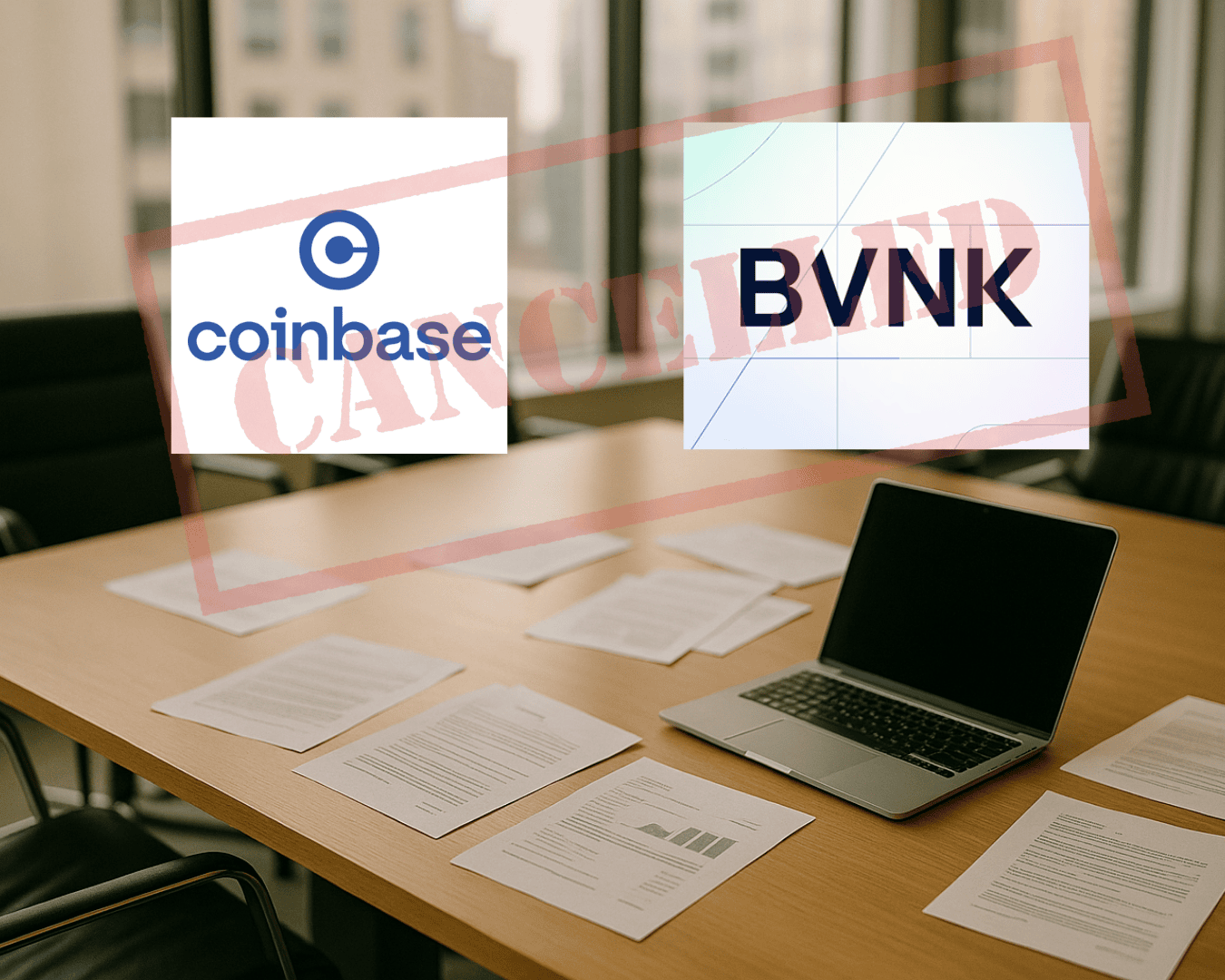









.png)






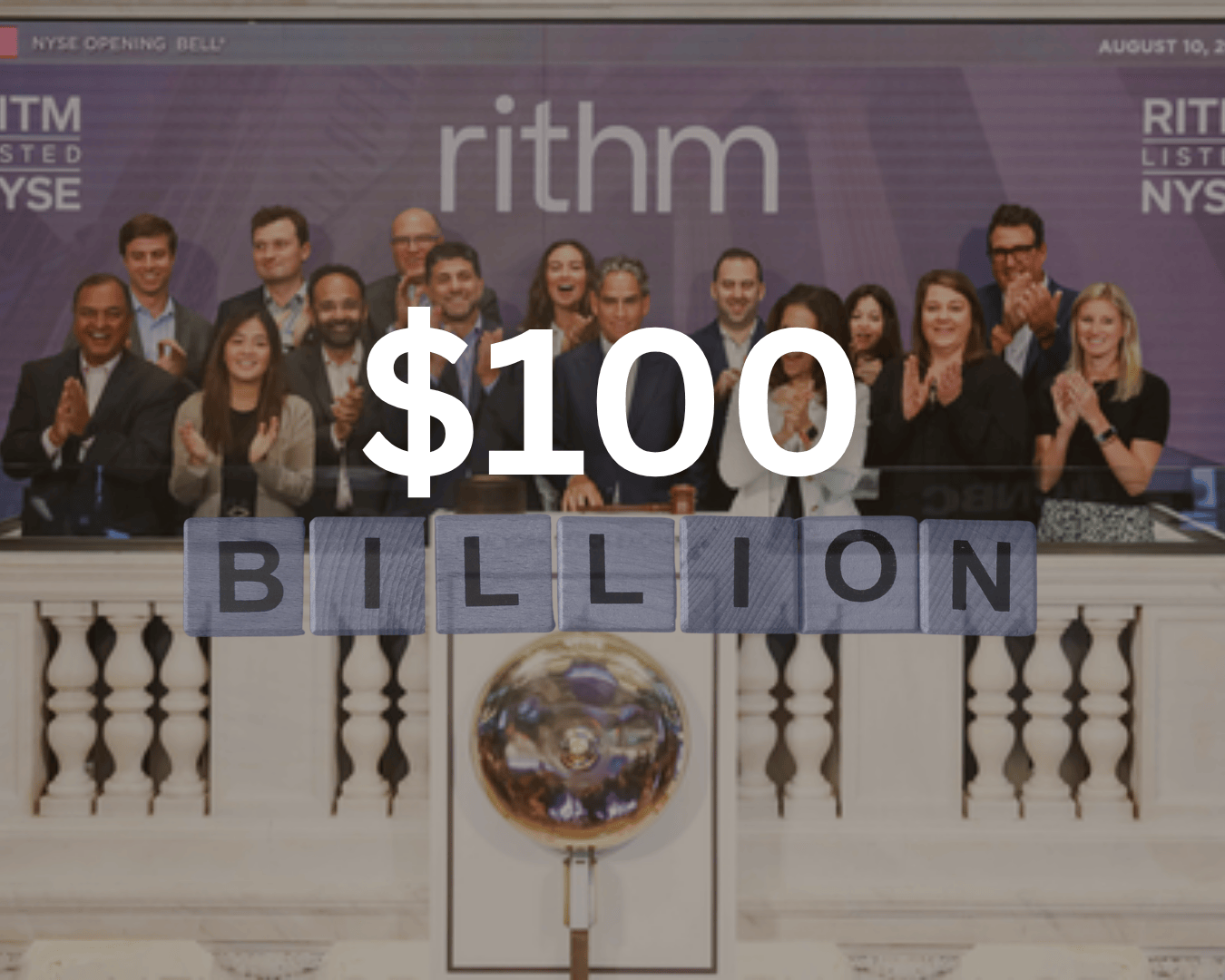





















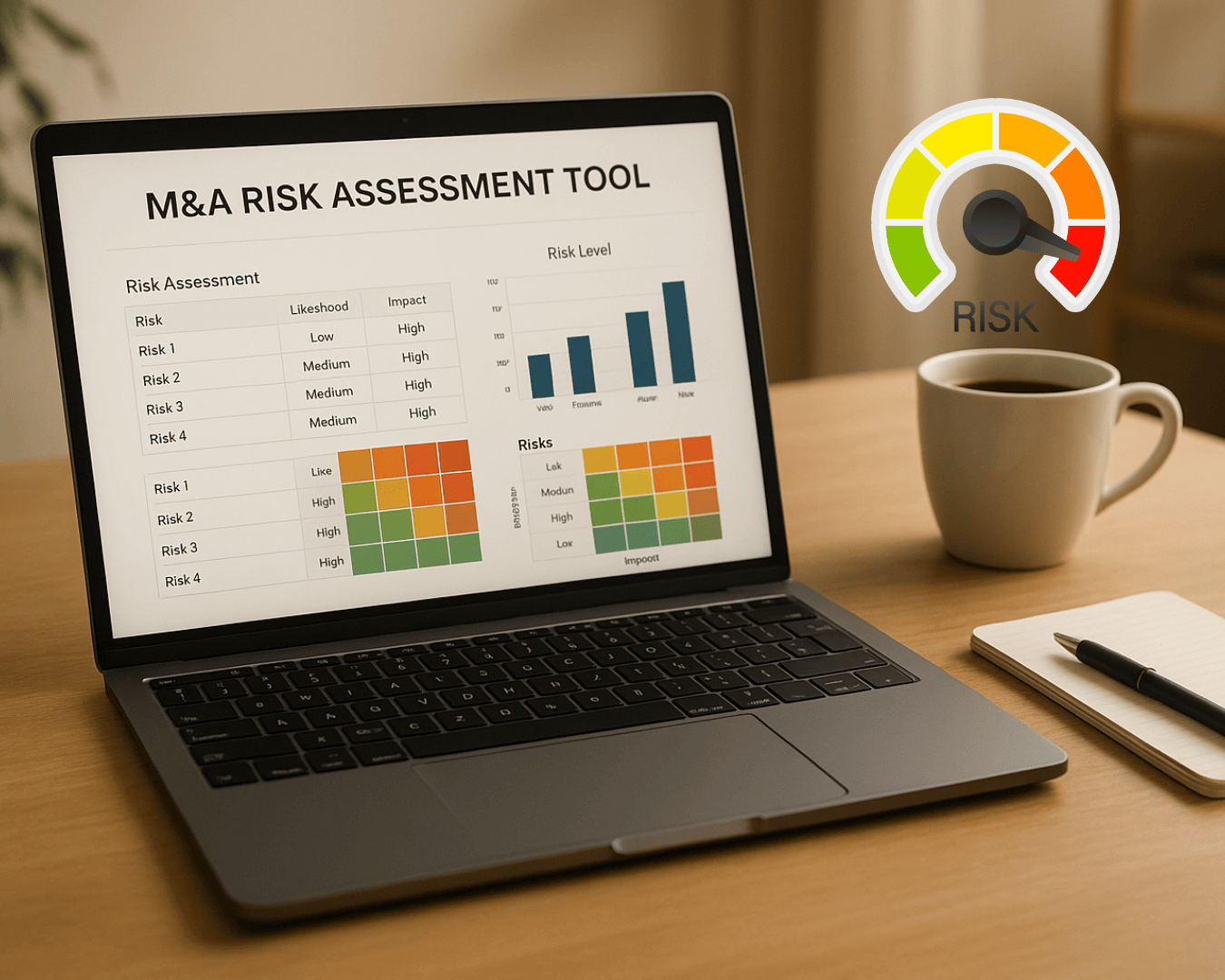

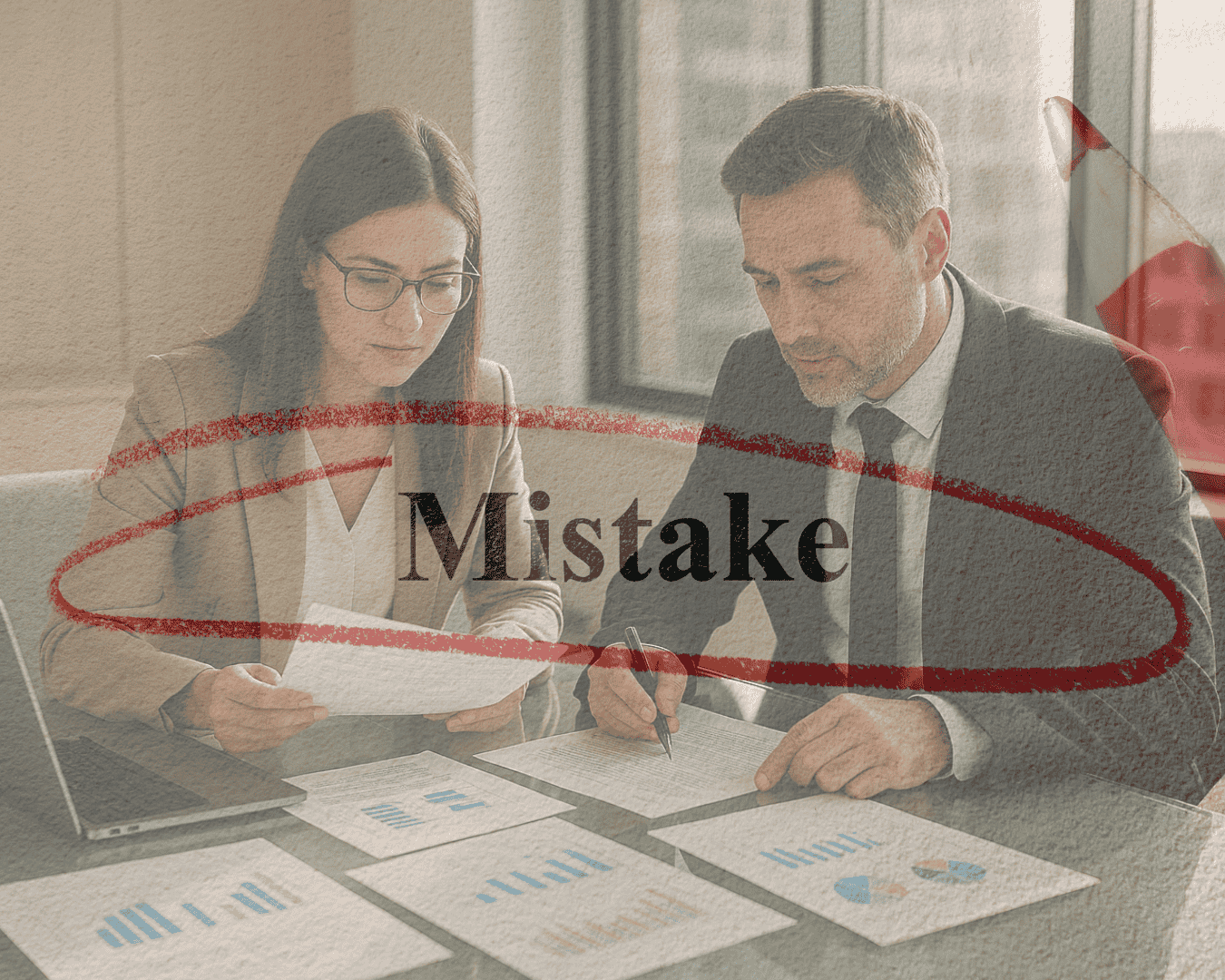
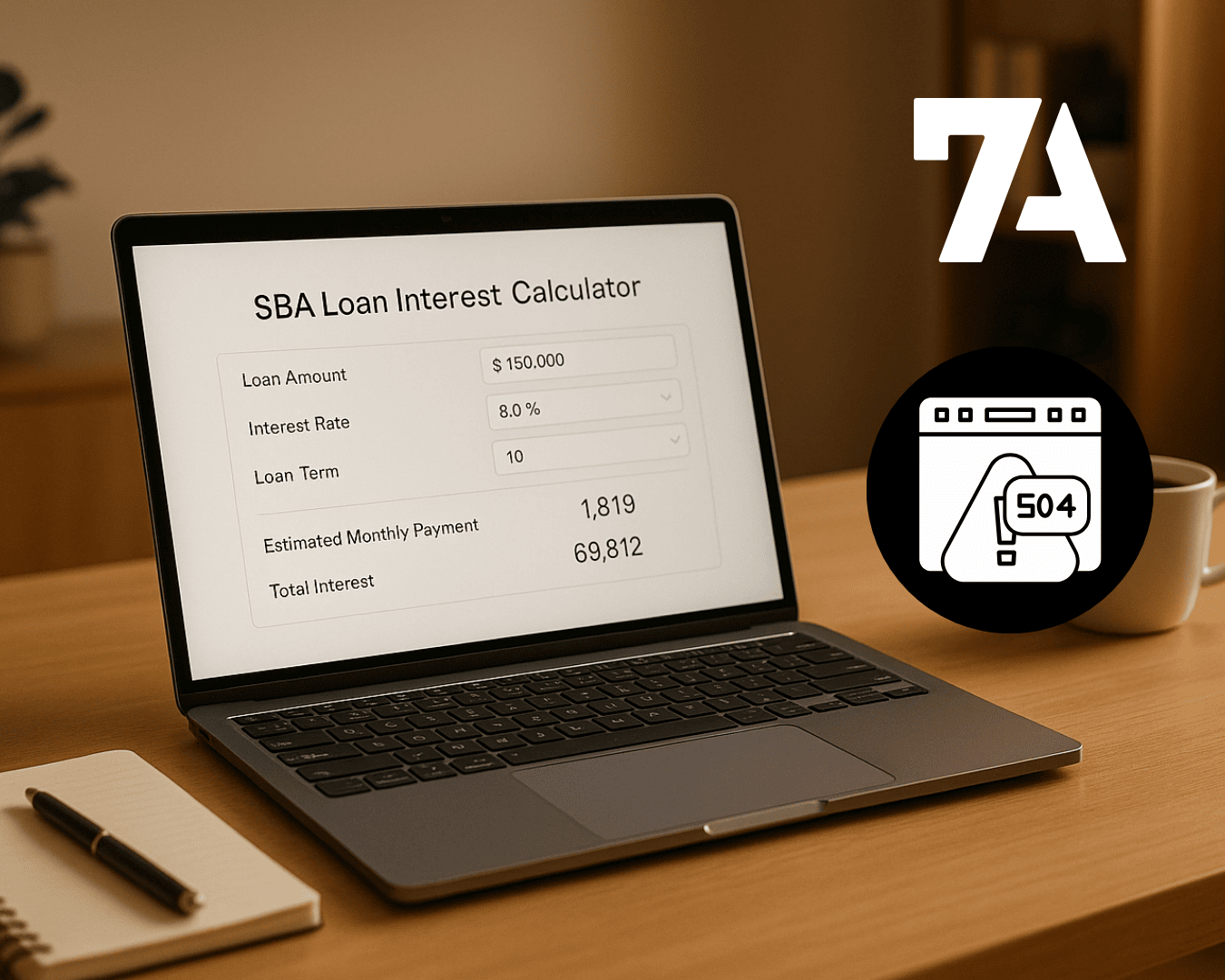








%20Loan%20Application%20Checklist.png)
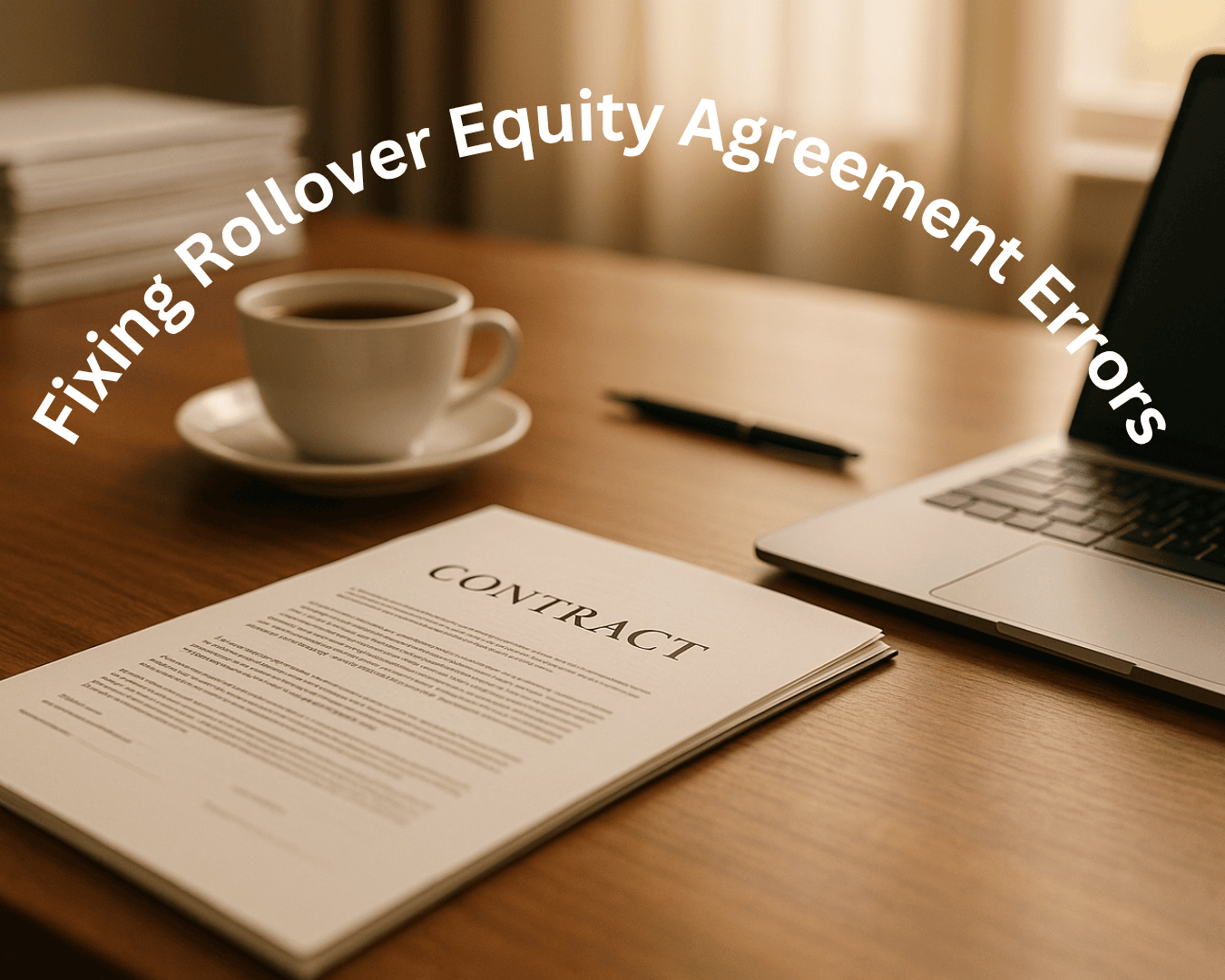
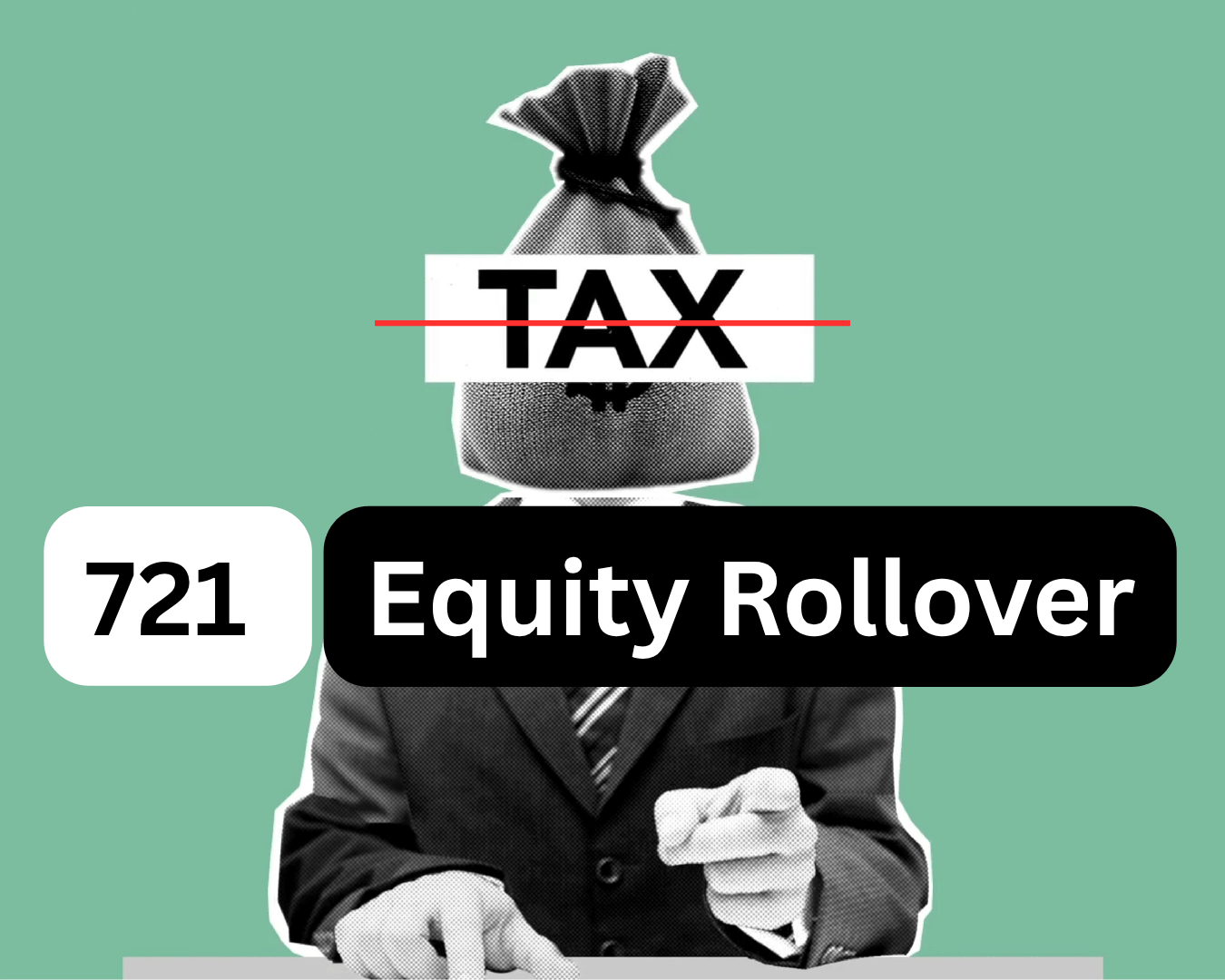
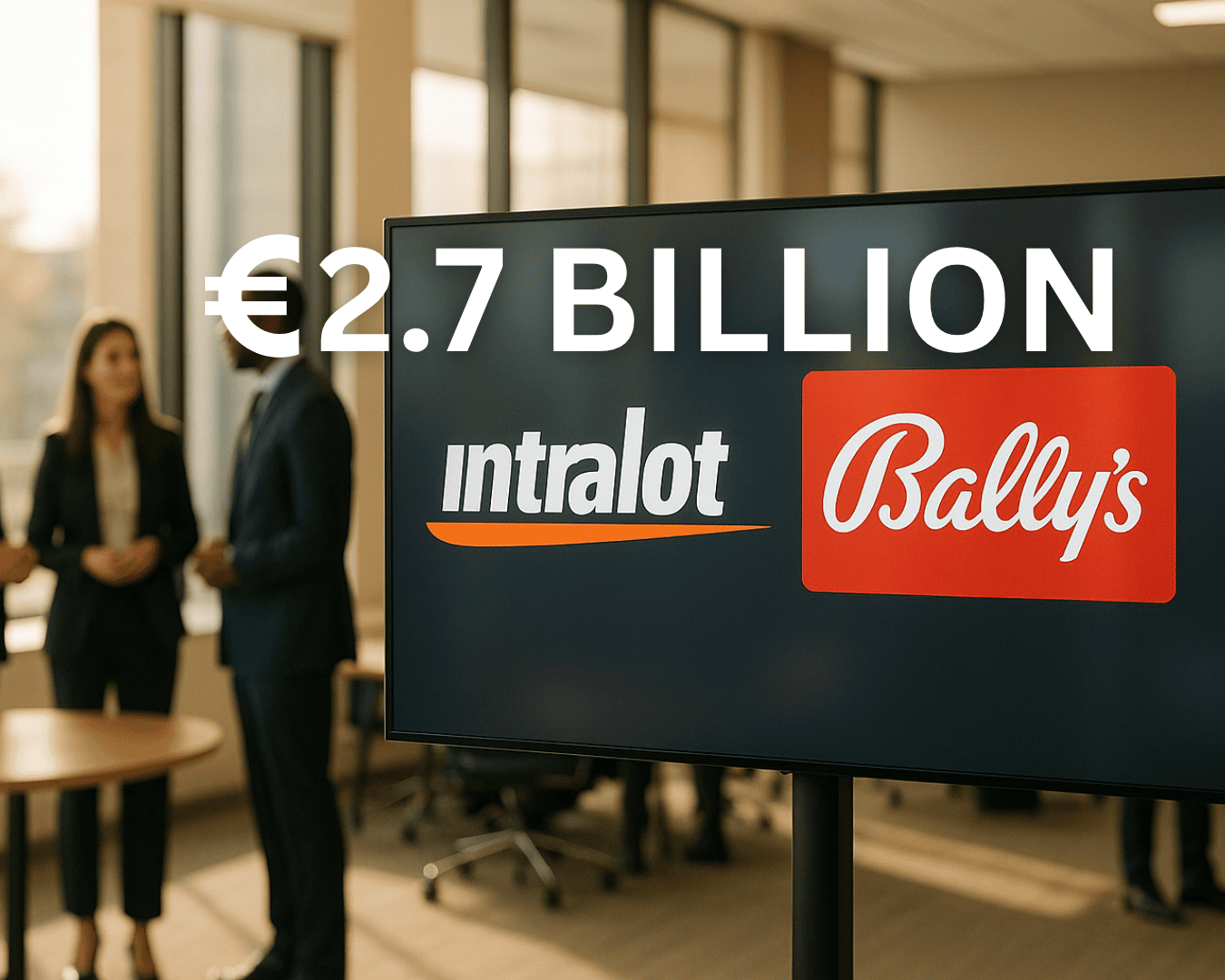










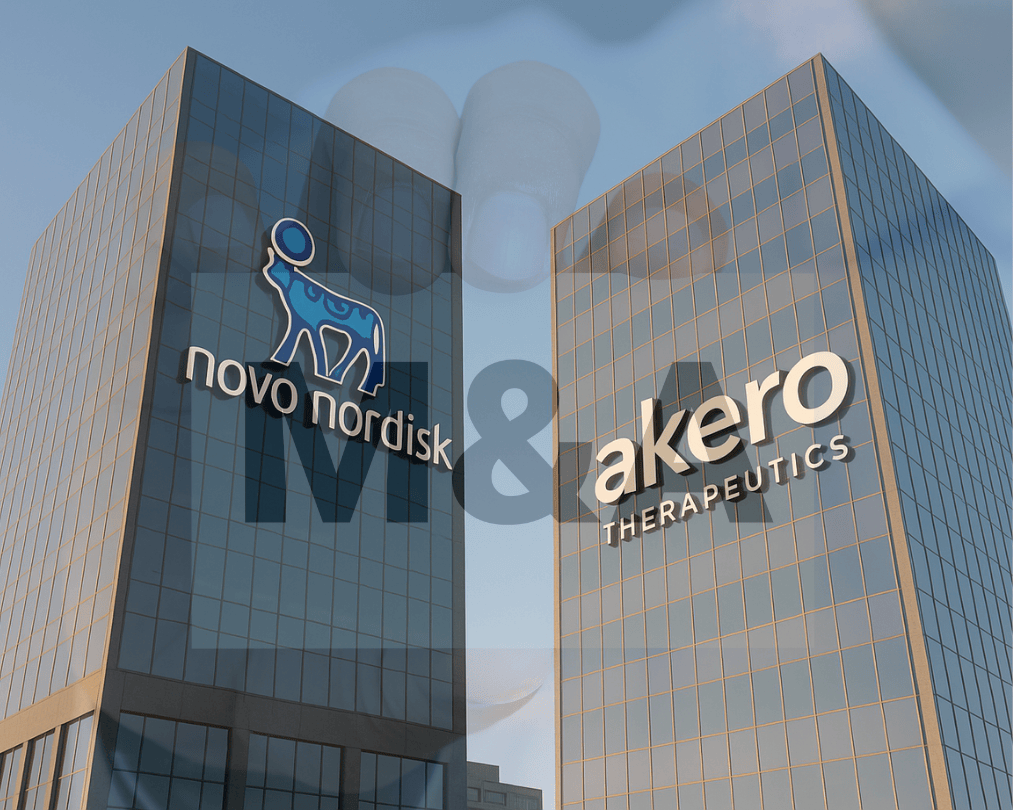



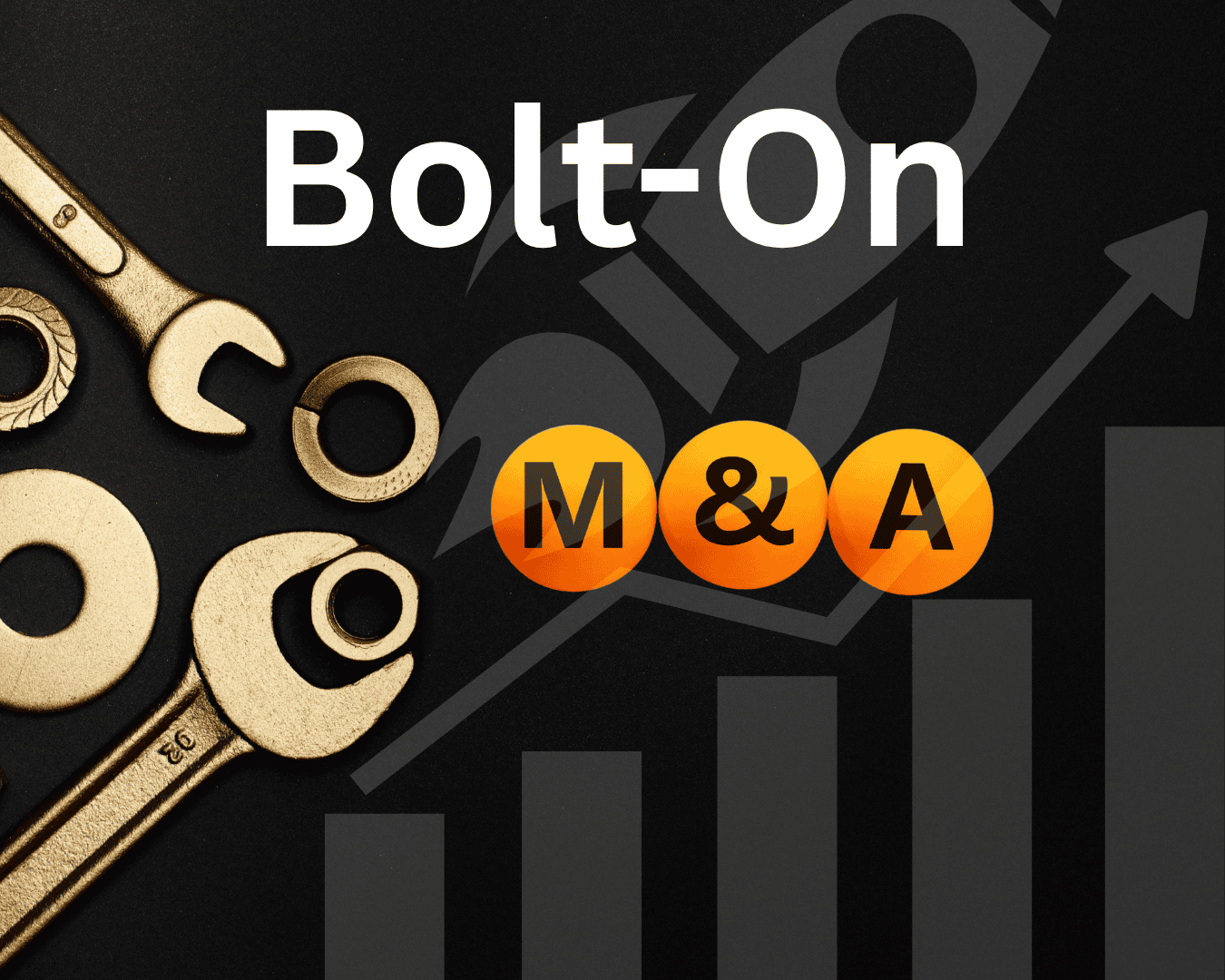










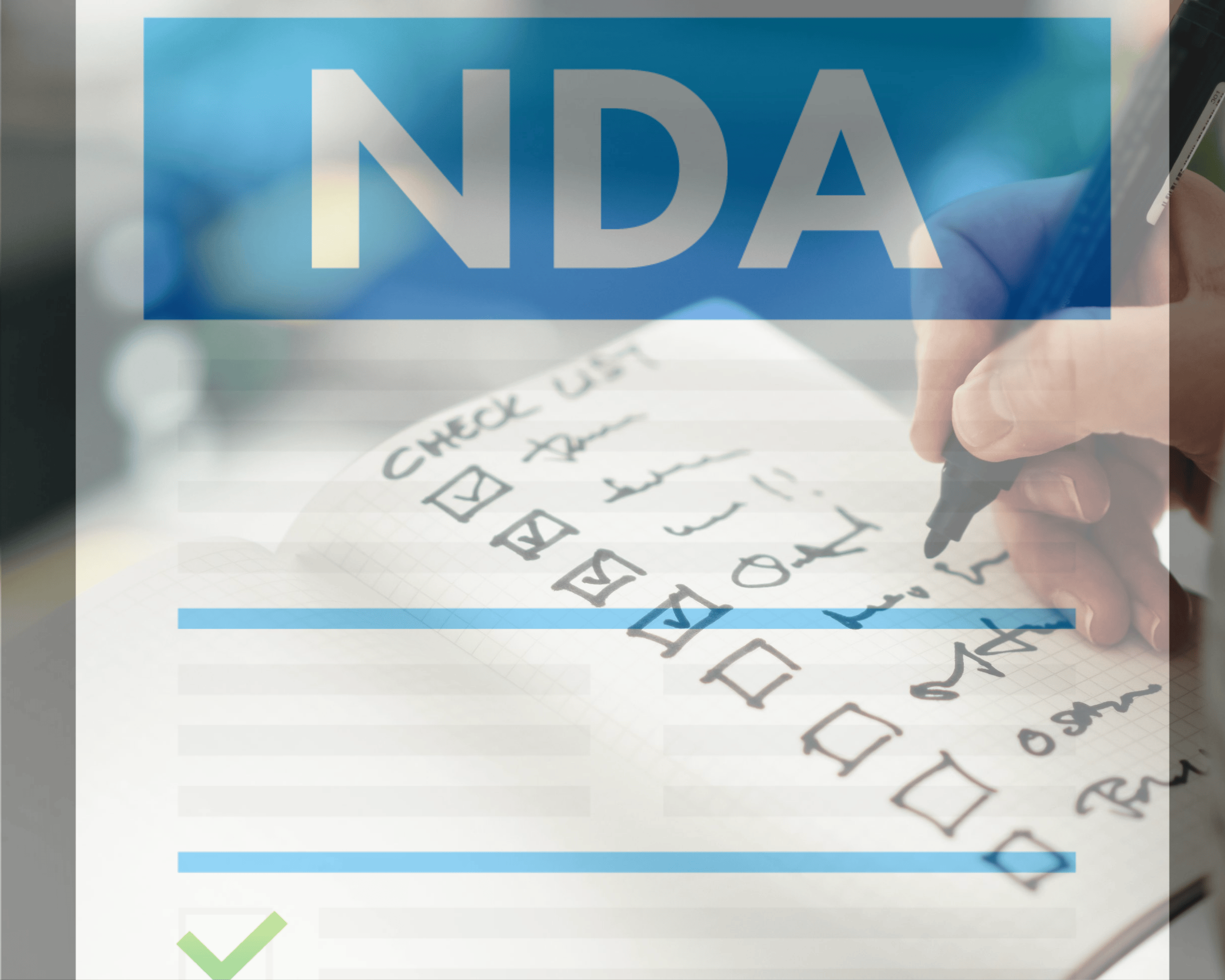

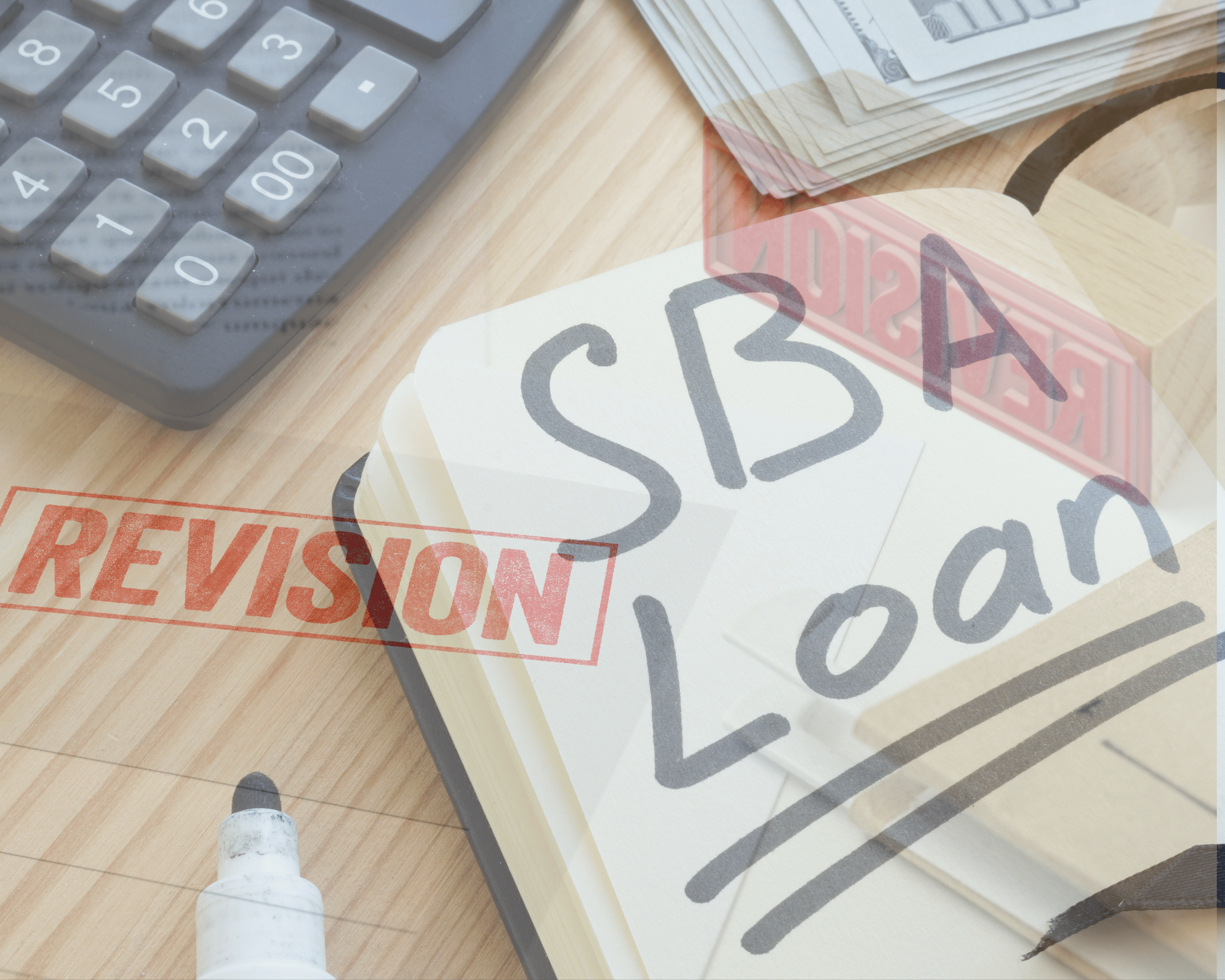








.png)
%20Loans%20%26%20Your%20Buy-Side%20Edge.png)











